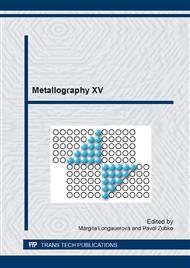p.129
p.133
p.137
p.143
p.149
p.155
p.161
p.166
p.172
Investigation of Dissimilar Metal Weld Behavior
Abstract:
This paper is focused on the research of a dissimilar metal weld (DMW) behavior during long-term NPP (VVER) operation. Investigated material comes from decommissioned non-operated VVER 440 reactor (NPP Nord, Greifswald) in Germany. The weld joining of ferritic 22K and austenitic 08Ch18N10T steels was performed in VÍTKOVICE a. s. The buttering first and second DMW layers are made from Sv-10CH16N25AM6 and Sv-04CH19N11M3 materials, respectively; the filler metal is EA-400/10T. The DMW microstructure and microhardness were evaluated in original state and after simulation of 30, 40 and 60 years of operation. Accelerated ageing at 450°C was designed to simulate long-term operation of the material. The aim of the research was to compare the original DMW with the aged ones and to determine the possible long-term operation effect on their microstructure and microhardness. Light optical microscope Nikon EPIPHOT 300 equipped with analyzer NIS Elements 3.0 and microhardness tester MHT Anton Paar 4 were used for the evaluation. The research program funded by ČEZ Company was ordered by ÚAM Brno in ÚJV Řež, a. s.
Info:
Periodical:
Pages:
149-154
Citation:
Online since:
April 2014
Authors:
Price:
Сopyright:
© 2014 Trans Tech Publications Ltd. All Rights Reserved
Share:
Citation:


